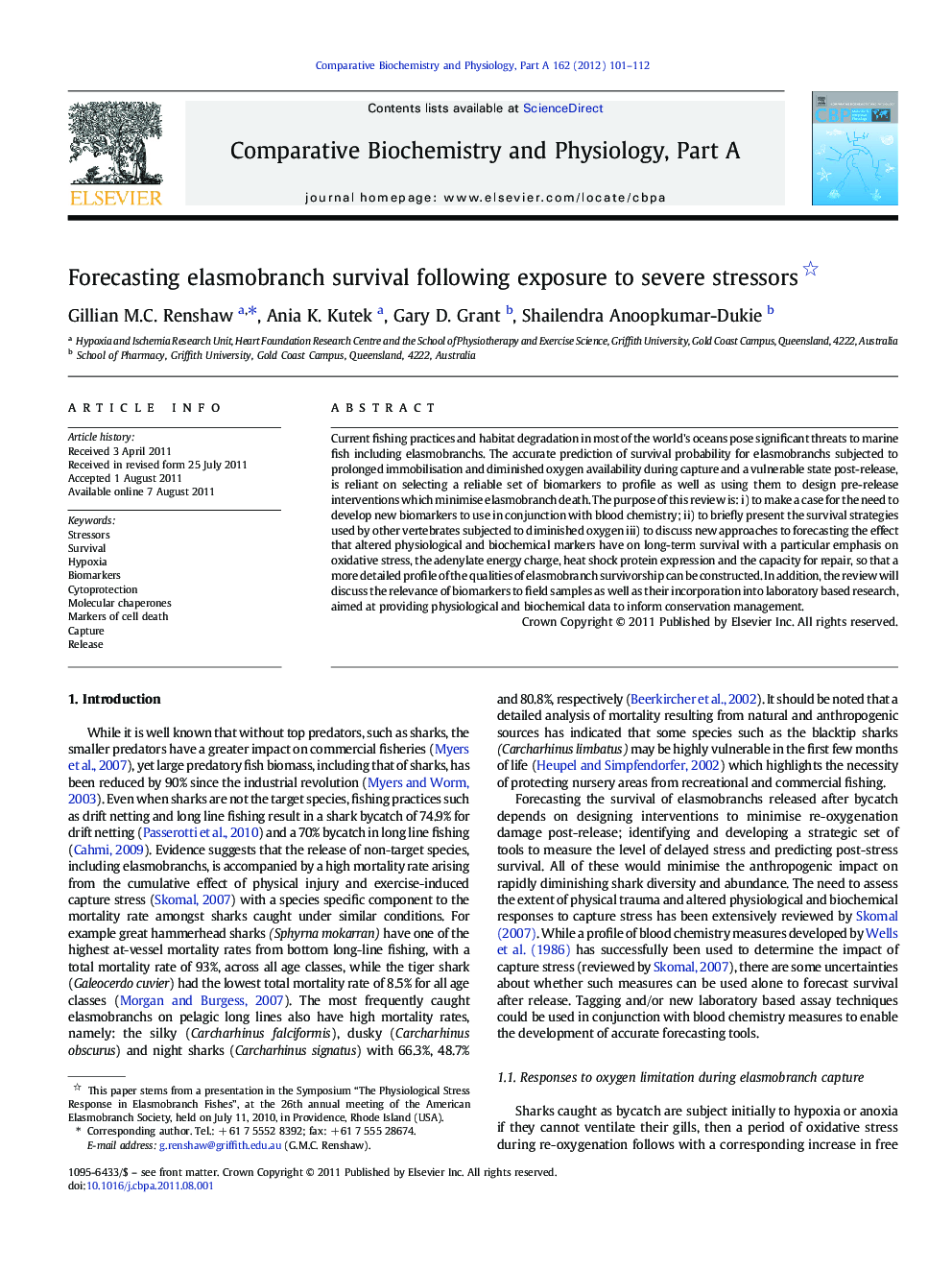| Article ID | Journal | Published Year | Pages | File Type |
|---|---|---|---|---|
| 1972651 | Comparative Biochemistry and Physiology Part A: Molecular & Integrative Physiology | 2012 | 12 Pages |
Current fishing practices and habitat degradation in most of the world's oceans pose significant threats to marine fish including elasmobranchs. The accurate prediction of survival probability for elasmobranchs subjected to prolonged immobilisation and diminished oxygen availability during capture and a vulnerable state post-release, is reliant on selecting a reliable set of biomarkers to profile as well as using them to design pre-release interventions which minimise elasmobranch death. The purpose of this review is: i) to make a case for the need to develop new biomarkers to use in conjunction with blood chemistry; ii) to briefly present the survival strategies used by other vertebrates subjected to diminished oxygen iii) to discuss new approaches to forecasting the effect that altered physiological and biochemical markers have on long-term survival with a particular emphasis on oxidative stress, the adenylate energy charge, heat shock protein expression and the capacity for repair, so that a more detailed profile of the qualities of elasmobranch survivorship can be constructed. In addition, the review will discuss the relevance of biomarkers to field samples as well as their incorporation into laboratory based research, aimed at providing physiological and biochemical data to inform conservation management.
